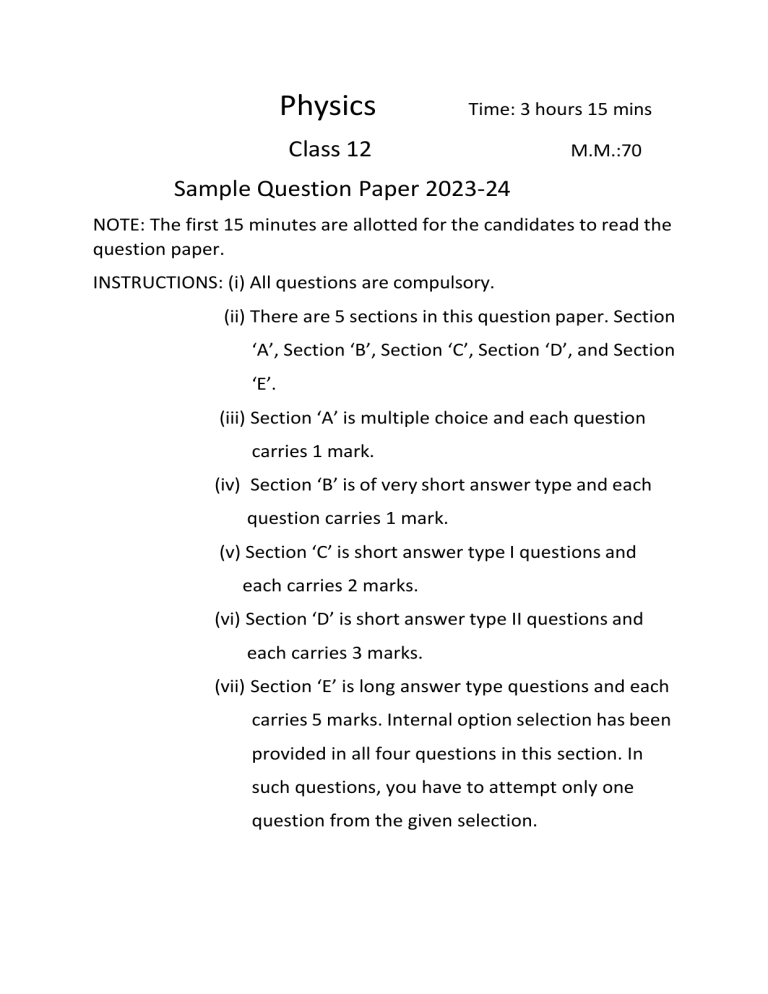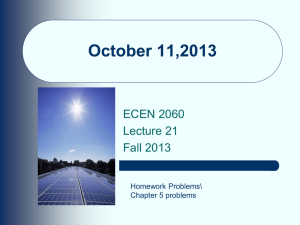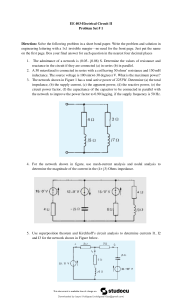
Physics
Time: 3 hours 15 mins
Class 12
M.M.:70
Sample Question Paper 2023-24
NOTE: The first 15 minutes are allotted for the candidates to read the
question paper.
INSTRUCTIONS: (i) All questions are compulsory.
(ii) There are 5 sections in this question paper. Section
‘A’, Section ‘B’, Section ‘C’, Section ‘D’, and Section
‘E’.
(iii) Section ‘A’ is multiple choice and each question
carries 1 mark.
(iv) Section ‘B’ is of very short answer type and each
question carries 1 mark.
(v) Section ‘C’ is short answer type I questions and
each carries 2 marks.
(vi) Section ‘D’ is short answer type II questions and
each carries 3 marks.
(vii) Section ‘E’ is long answer type questions and each
carries 5 marks. Internal option selection has been
provided in all four questions in this section. In
such questions, you have to attempt only one
question from the given selection.
SECTION – ‘A’
1(a) The unit of electric flux is –
(i)Newton/Coulomb
(ii)volt/meter
(iii) volt x meter
(iv)Newton meter/Coulomb
1
(b) The Force acting on a particle of charge moving with velocity
in a magnetic field is –
(i)
(ii)
(iii) q ( X )
(iv)
X X
1
(c) If
And
are the electric vector and magnetic vector of the
electromagnetic wave respectively, then the direction of propagation
of the electromagnetic wave is along(i )
(i i i ) . .
(ii)
(iv)
X
1
(d) Two lenses of 4 dioptre and -2 dioptre are kept in contact. The
focal length of the compound lens will be (i)50 cm
(ii)-50 cm
(iii) 25 cm
(iv)-25 cm
1
(e) Photons of energy 6eV are incident on a metal surface. Then the
maximum energy of the emitted photoelectron is 4eV. The stopping
potential should be –
(i) 4eV
(ii) 2eV
(iii) 6eV
(iv) 10eV
1
(f) The impurity added to pure germanium to make a p-type
semiconductor is –
1
(i) Phosphorus
(ii) Antimony
(iii) Aluminium
(iv) Arsenic
SECTION – ‘B’
2(a) Write the formula and units for specific conductivity.
1
(b) Write the expression for the force of unit length acting on two
straight parallel infinite-length current-carrying conductors.
1
(c) A coil of 10 Ohm resistance and 10 Henry inductance is connected
to a 50-volt battery. Calculate the value of energy stored in the coil. 1
(d) Write the definition of critical angle.
1
(e) The radius of the first Bohr orbit of hydrogen is 0.53 Å. Find the
radius of the third Bohr orbit.
1
(f) Find the value of the potential of the accelerator in the electron
microscope, while the wavelength of the electron is 1 Å.
1
SECTION – ‘C’
3(a) A thick wire of resistance 6-ohm is stretched and its length is
doubled. Calculate the new resistance of the wire.
2
(b) The angle of minimum deviation of a prism is 30 °. The angle of
refraction at the first refracting surface of the prism is 30°.Find the
refractive index of the material of the prism.
2
(c) Define atomic mass unit (a.m.u.). Express its value in Kilogram and
Mev.
2
(d) What are the electric currents measured by ammeters 1 and 2
shown in the attached figure? If their resistance is negligible and the
p-n junction diode is ideal.
2
SECTION – ‘D’
4(a) What is meant by potential gradient? Establish a relation between
potential gradient and electric field intensity.
3
(b) Define drift velocity. Establish a relation between drift velocity
and electric current.
3
(c) A proton, a neutron and an - particle accelerated with the same
potential difference enter a uniform magnetic field perpendicular to
it. (i) Compare their kinetic energies. (ii) If the radius of the circular
path of the proton is 10 cm, then what will be the radii of the paths of
the neutron and α- particle?
3
(e) A screen is placed at a distance of 90 cm from the object. Two
images are formed on the screen by placing a convex lens at positions
20 cm apart from each other. Find the focal length of the lens.
3
5. (a) Explain the atomic model of magnetism.
3
(b) In an alternating circuit L, C, and R are connected in series. Draw
the circuit diagram and write the formula for the impedance and
resonant frequency of the circuit. If the alternating potential applied
in the circuit is 300 volts, inductive reactance is 50 ohms, capacitive
reactance is 50 ohms and ohmic resistance is 10 ohms, then Find the
impedance of the circuit and potential difference between the ends
of L, C and R.
3
OR
The number of turns in the primary and secondary coils of a step-up
transformer are 100 and 400 respectively. If 120 volts A.C. is imposed
in primary coil.
Then find – (i) Transformation ratio
(iii)Voltage produced in the secondary coil.
3
(c) Explain Maxwell’s electromagnetic wave theory.
3
(d) Explain the necessary conditions for constructive and destructive
interference of waves.
3
(e) Write the laws of the photoelectric effect.
3
SECTION – ‘E’
6. Write Gauss’s theorem of electrostatics. With its help, obtain an
expression for the intensity of the electric field near a uniformly
charged straight wire of infinite length.
5
OR
Obtain an expression for the capacitance of a parallel plate capacitor
when dielectric is filled between the two plates.
5
7. Draw a labelled ray diagram of a compound microscope and find
the formula for its magnifying power, when the final image is formed
at the least distinct vision.
5
OR
What do you understand by diffraction of light? Explain the diffraction
pattern obtained due to diffraction of light through a thin slit.
5
8. The energy of the electron in the ground state of the hydrogen
atom is -13.6eV. A photon of energy 12.57eV is absorbed by an
electron of the hydrogen atom in the lowest energy level. To what
energy level will the hydrogen atom be excited? Calculate the
wavelength of the second line of the Lyman series and the second line
of the Balmer series.
5
OR
The Q value of a nuclear reaction A + b → c + d is defined by the
following equation Q = {
+
- }2 where the given mass
is the nuclear rest mass. Based on the given data, tell whether the
following reactions are exothermic or endothermic.
(i)1 + 3 → 2 + 2
(ii) 12 + 12 → 20 + 4
5
1
1
1
1
6
6
10
2
9. Draw the circuit diagram for the p-n junction diode in forward and
reverse biasing. Explain the characteristic curves obtained for the
two states.
5
OR
What is p-n junction diode? Explain the working of p-n junction diode
as a half wave rectifier by drawing the circuit diagram. Show the
wave forms of input and output voltages.
5
***********






